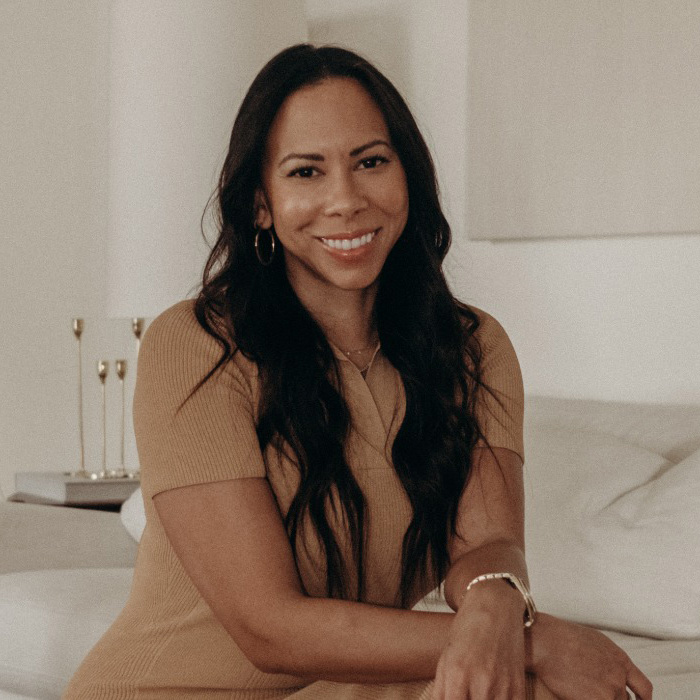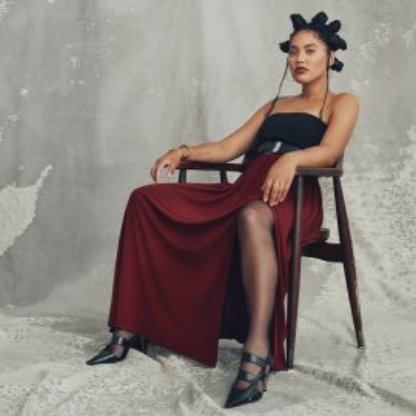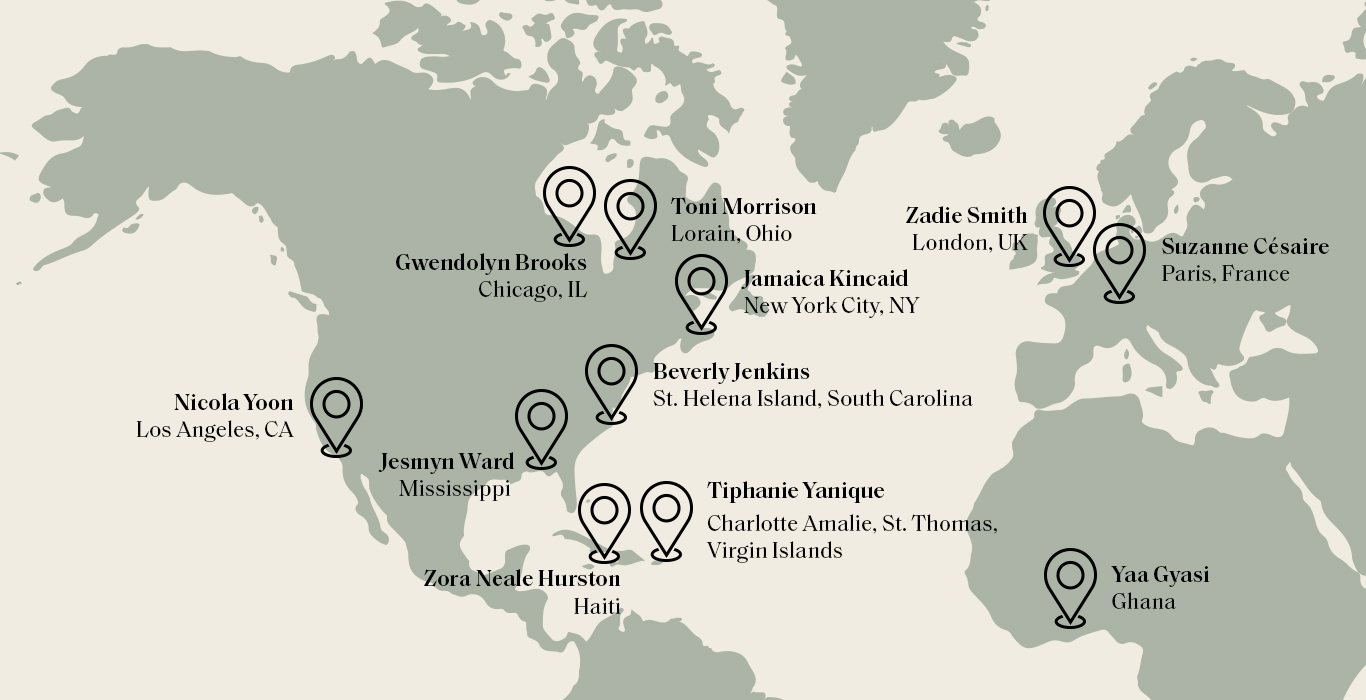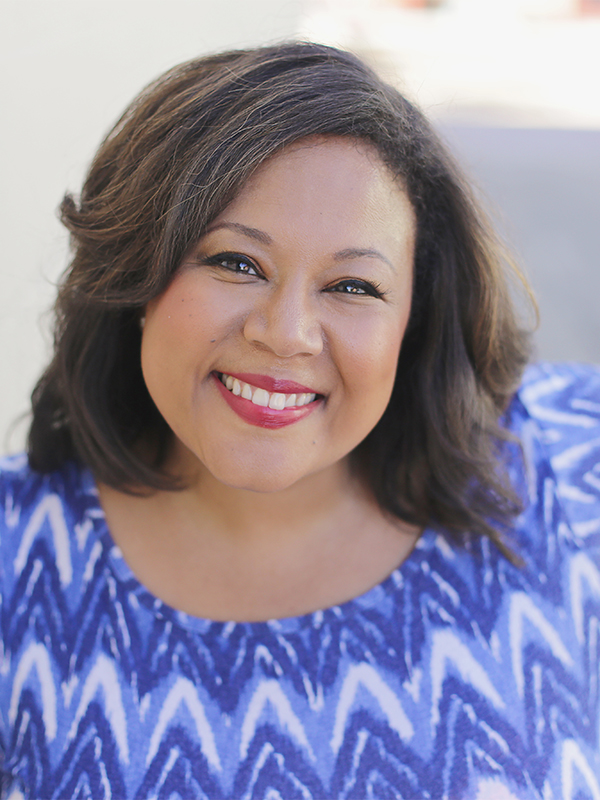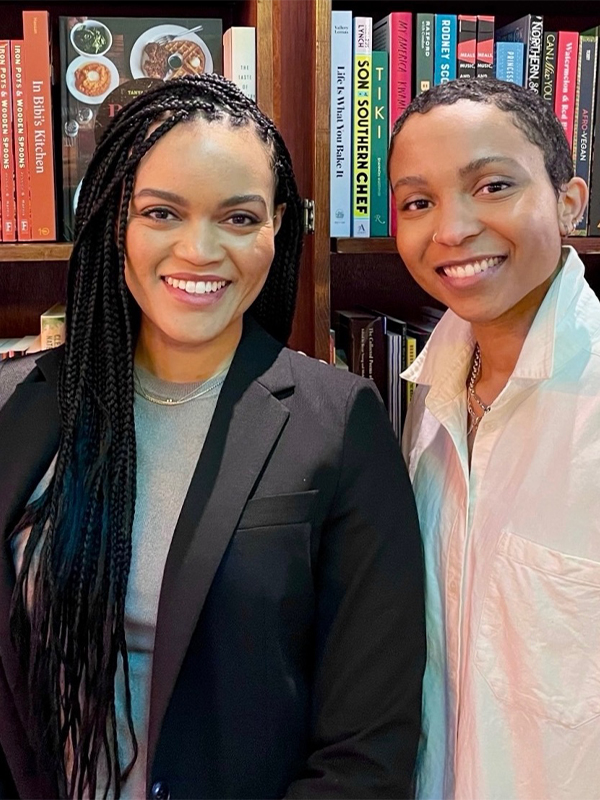Black women have long been excluded from the mainstream genre of travel writing. And for many of them, that’s been the impetus for immersing themselves in the unfamiliar. These literary creatives have seized the opportunity to take their work on the road and allow their often complicated journey around the world to influence their writing. This trend has created a richer canon of Black literature—and literature in general.
The late Zora Neale Hurston, for example, wrote Tell My Horse: Voodoo and Life in Haiti and Jamaica, a fascinating anthropological on Afro-Caribbean religion. She details seeing Haitian people worship Jesus along with deities like Damballah Ouedo and Erzulie Freida. She writes of people being ridden by spirits, or a loa, causing their bodies to writhe and convulse. Far from the portrayals of Haitians as barbaric and evil for their spirituality, Hurston paints a vivid and respectful academic portrait of the power of Haitian and Jamaican spirituality.
“I did not know then that I had embarked on something called self-invention, the making of a type of person that did not exist in the place where I was born”
– Jamaica Kincaid
Moving to other cities or countries has undoubtedly helped Black women writers find inspiration. Nicola Yoon, the best-selling young adult author of The Sun is Also a Star and Blackout, found herself entranced by Los Angeles when she moved there from Boston. LA’s embrace of dreaming as a lifestyle and ethos gave her inspiration and drive. “Here, it is okay to create another life for yourself,” says Yoon. “You don’t have to give up your dreams in order to grow up.”
Yoon, who in her early days wrote while still working full-time in finance, found that living in the “City of Dreams” helped her to stay motivated. “I was just another person in Los Angeles with a dream, but it was okay because here I was surrounded by dreamers,” she says. “I was proud to join their ranks.”
Other writers who moved away from home found the task of assimilating difficult. But instead of running away from the confusion, they dove into it, creating compelling work about what it means to find yourself in a strange land at a strange age. At 17, the late Jamaica Kincaid moved from her home in St John’s, Antigua, to become an au pair in Scarsdale, New York. She soon spent her youth as a writer exploring New York City and coming into her own. In her 1995 New Yorker essay “Putting Myself Together,” Kincaid writes, “I did not know then that I had embarked on something called self-invention, the making of a type of person that did not exist in the place where I was born—a place far away from New York and with a climate quite unlike the one that existed in New York. I wanted to be a writer; I was a person with opinions, and I wanted them to matter to other people.”
The late Suzanne Césaire, who was born in Martinique, was often overshadowed by her much more famous husband Aimé Césaire. But as a scholar in Paris, in the imperial core of a country that had colonized her own homeland and much of the African Diaspora, Suzanne Césaire began to think deeply about Black life. Her writings made her the “Mother of Afro-Surrealism.” As a framework, Afro-Surrealism helps Black artists portray the disturbing experience of racism without the limitations of straight realism. Without Césaire, we likely wouldn’t have Afro-Surrealist TV and movies like Sorry to Bother You or Atlanta, which explore Black people’s past and present through an Afro-Surrealist lens.
“They didn’t have the laws that they had in other parts of the country, but what they did have were understandings.”
– Toni Morrison
Certain locations also have a lot to teach these authors about Black pasts, so that they can transmit that information to readers today. Beverly Jenkins, the iconic author of 19th century Black historical romances, sets her stories “in places where African-American people actually walked,” which is why readers are drawn in by the cultural specificity of her books. Many of her visits have occurred through a group she’s a part of called Diva Daze. “Every two years for the past twenty, we’ve gathered to renew our bonds of Sistership by touring iconic African-American sites,” says Jenkins.
But above all, the place that’s left the most lasting impact on her stories is the Penn Center on St. Helena Island in South Carolina. Jenkins says that “Penn School was founded in 1862 as part of the Port Royal Experiment that also established hospitals and a plan allowing the formerly enslaved to buy land on plantations previously owned by the local slave owners.” Even after the last class graduated in 1953, it remained relevant to current events at the time, with Martin Luther King Jr. and other civil rights leaders using it as a space to organize. Martin Luther King Jr. even composed his ‘I Have A Dream’ speech while staying in one of the cottages, says Jenkins.
As an author, Jenkins takes painful Black history and contextualizes it for readers, especially little-known histories of free Black people and autonomous Black communities. Jenkins’ work shows that our history is more than just our trauma. She crafts steamy romances that remind us whatever oppression we’ve been through, we’ve always loved deeply and passionately.
For other writers, what pulls them in is what they know most intimately: home. The late Toni Morrison’s work is greatly influenced by her own upbringing in Lorain, Ohio, which she wrote was “neither plantation nor ghetto,” saying that while it was a Northern city with Black and white people, segregation was still in effect. “They didn’t have the laws that they had in other parts of the country, but what they did have were understandings,” Morrison said in an interview, adding that Black people were not welcome at the movie theaters or at Lake Erie, which borders Lorain. Much of Morrison’s work, like Beloved (1987) and Sula (1973) is set in fictional Ohio or Midwestern towns that mirror the social dynamics and history that she witnessed growing up in Lorain, providing a close-up of Black life in the Midwest.
“I grew up here—I did all the things a kid and teenager does in a diverse global city…” – Tiphanie Yanique
Jesymn Ward, who writes in a Black Southern Gothic style, also finds inspiration from her home state of Mississippi, which she has called her “True South.” And Yaa Gyasi—author of Homecoming and Transcendent Kingdom—who moved from Ghana to Huntsville, Alabama, as a child, infuses her dual homelands in her work that connects the African Diaspora from the American South to the shores of Ghana.
Zadie Smith, a prolific Jamaican-British writer, shows readers sides of London that they don’t know exist; her work features Bengali, Ghanainan and Cambodian characters, reifying the global nature of the city and the role of immigrants in building it.
Tiphanie Yanique, author of Land of Love and Drowning and Monster in the Middle, says that the city that’s influenced her work the most is Charlotte Amalie in St. Thomas, Virgin Islands, where she was born in what they call “The Old Hospital.” “I grew up here—I did all the things a kid and teenager does in a diverse global city, which Charlotte Amalie is,” she tells Sweet July, adding that one of her favorite places is Blackbeard’s Castle, where there is a monument to the Queens of the Fireburn—a labor rebellion led by Black women in 1878.
The cultural diversity of Charlotte Amalie has continued to influence Yanique’s work, which is rooted in the various cultural influences you can find all over the Caribbean. “This is a Caribbean city—which means it’s an African city, a European city, an Asian city and an American city,” she says.
Much like Black life in Charlotte Amalie animates Yanique’s writing, the late Gwendolyn Brooks—the first Black person to win a Pulitzer—found Black life in the Bronzeville neighborhood of Chicago to be a loving muse, starting with her 1945 debut poetry collection, A Street in Bronzeville, which gracefully sketched Black people and their lives, loves and communities in the segregated Chicago’s South Side. Her poetry was joyful sometimes and somber at other times, reflecting the dangers urban Black people faced. One of her poems, “We Real Cool,” is about a group of young Black men in a pool hall. It begins with the lines, “We real cool / We / left school.” It ends, “We die soon.”
Whether it’s staying close to home, traveling across oceans in search of a new life, immersing oneself in a different part of the diaspora, or becoming fascinated by a historic landmark, Black women writers have always and will always continue to let themselves be deeply inspired by where they roam.



